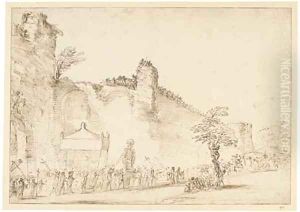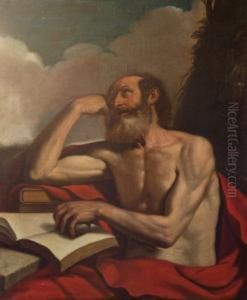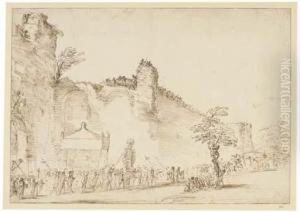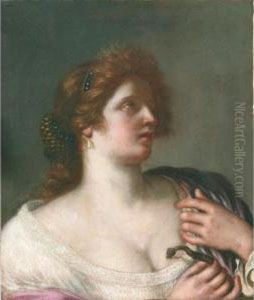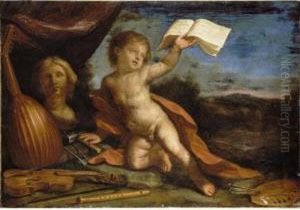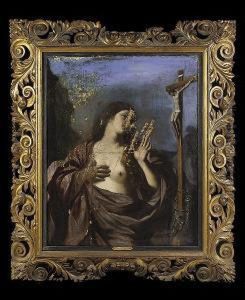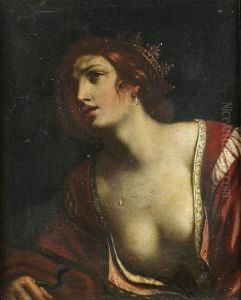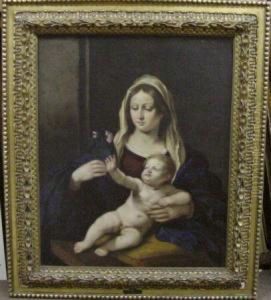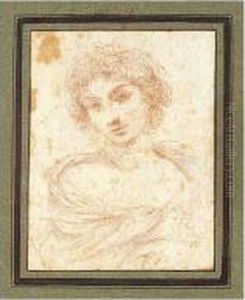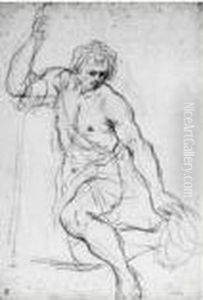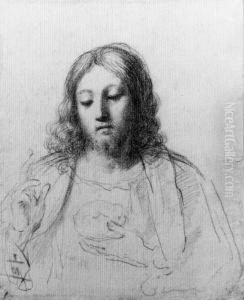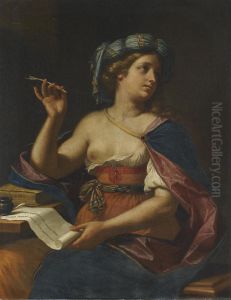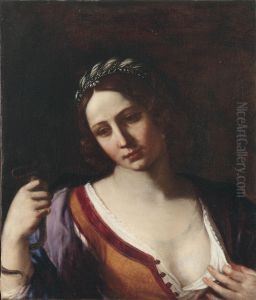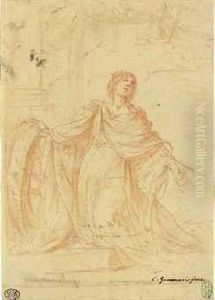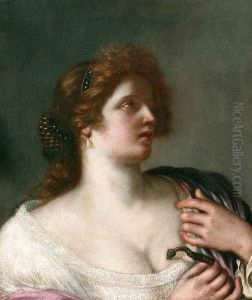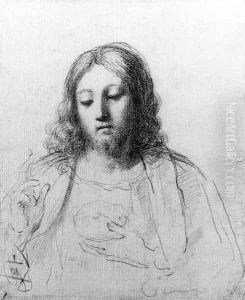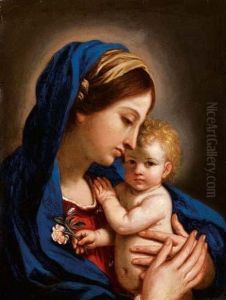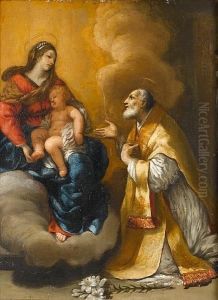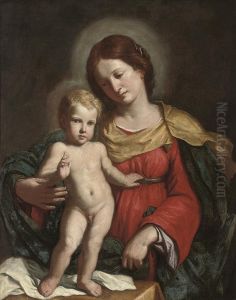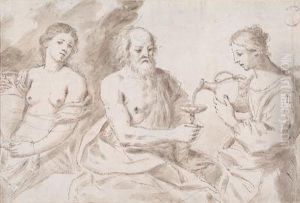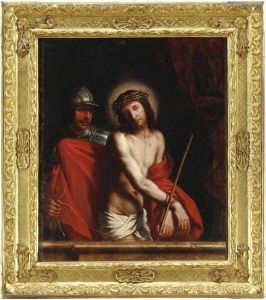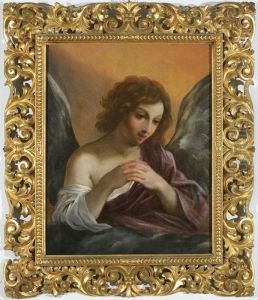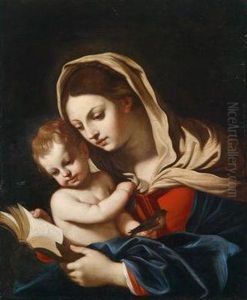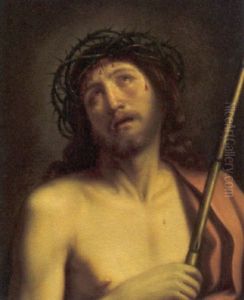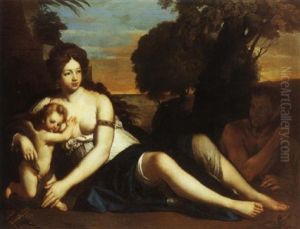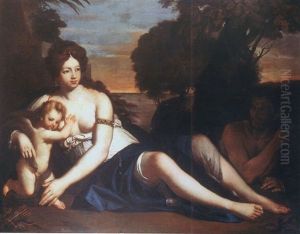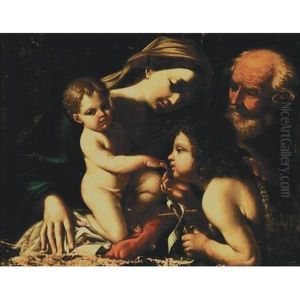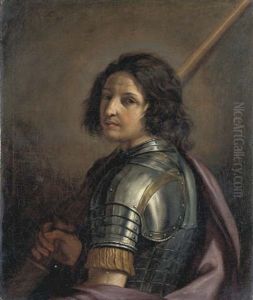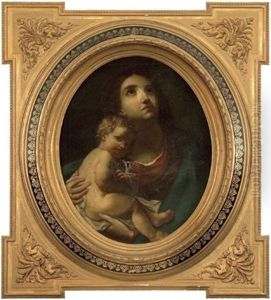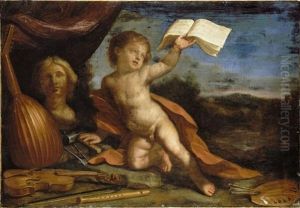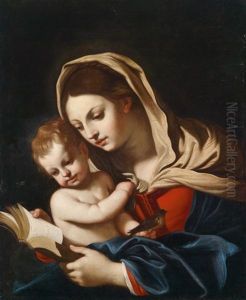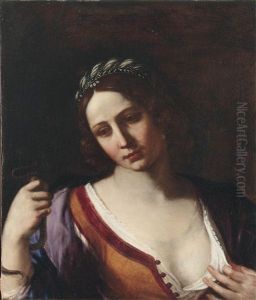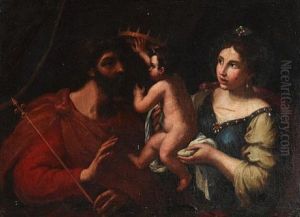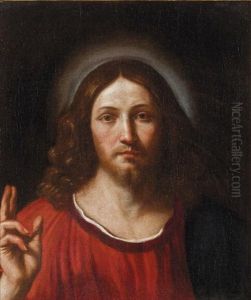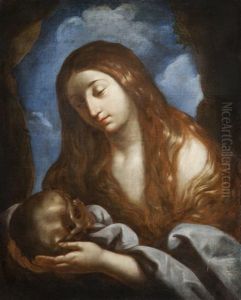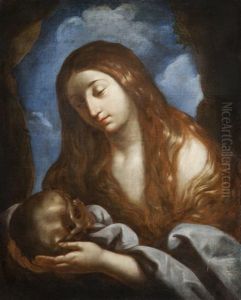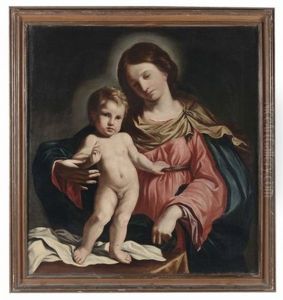Cesare Gennari Paintings
Cesare Gennari was an Italian painter of the Baroque period, active mainly in his native city of Bologna and surrounding areas. He was born on December 12, 1637, in Cento, a town near Bologna, which was a part of the Papal States at the time. Cesare was part of a family of artists; he was the son of the painter Ercole Gennari and the grandson of Benedetto Gennari, another artist. Moreover, he was the brother of Benedetto II Gennari and the nephew of Guercino, a prominent Baroque artist who had a significant influence on Cesare's style and career.
Cesare Gennari received his initial training in the workshop of his uncle, Guercino, who was by then an established painter. Under Guercino's tutelage, Cesare honed his skills, developing a style that was deeply influenced by his mentor's vivid color palette and dynamic compositions. After Guercino's death in 1666, Cesare took over the running of his workshop along with his brother Benedetto II.
During his career, Gennari worked on various religious and mythological subjects, producing altarpieces, portraits, and historical scenes. His works are characterized by their dramatic use of light and shadow, a technique known as chiaroscuro, which was central to Baroque art. Gennari also incorporated a sense of movement and emotional expressiveness into his paintings, embodying the theatricality that is often associated with the Baroque period.
In addition to his painting, Cesare Gennari was also involved in the cultural and artistic life of Bologna. He was a member of the Accademia degli Incamminati, an academy founded by the Carracci family, which played a significant role in the development of the Bolognese School of painting.
Gennari's works can be found in various churches and collections in Italy, particularly within Bologna and its surroundings. Despite being less well-known than his famous uncle, Cesare Gennari's contribution to the art of the Baroque era remains noteworthy.
Cesare Gennari died on February 11, 1688, in Bologna. His legacy continued through his pupils and his family's ongoing involvement in the arts, maintaining the artistic traditions established by Guercino and the Bolognese School.
